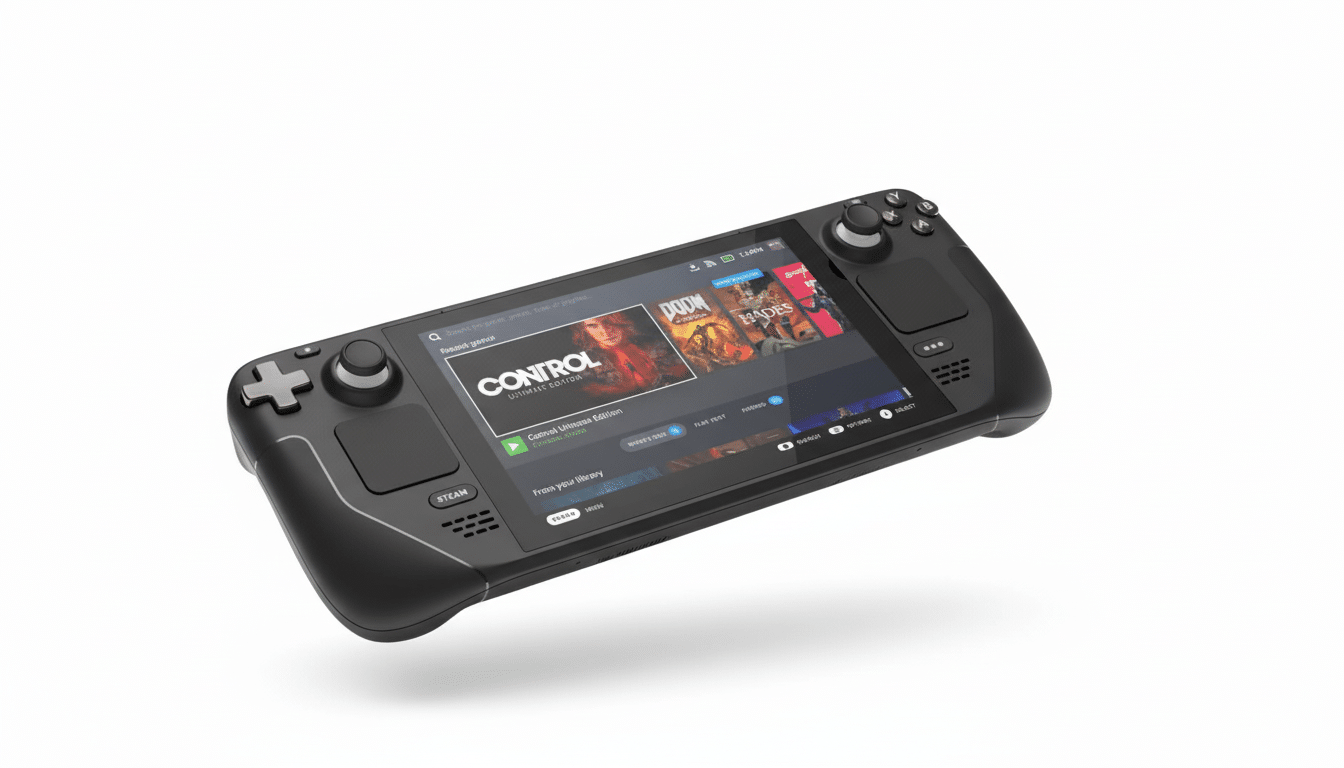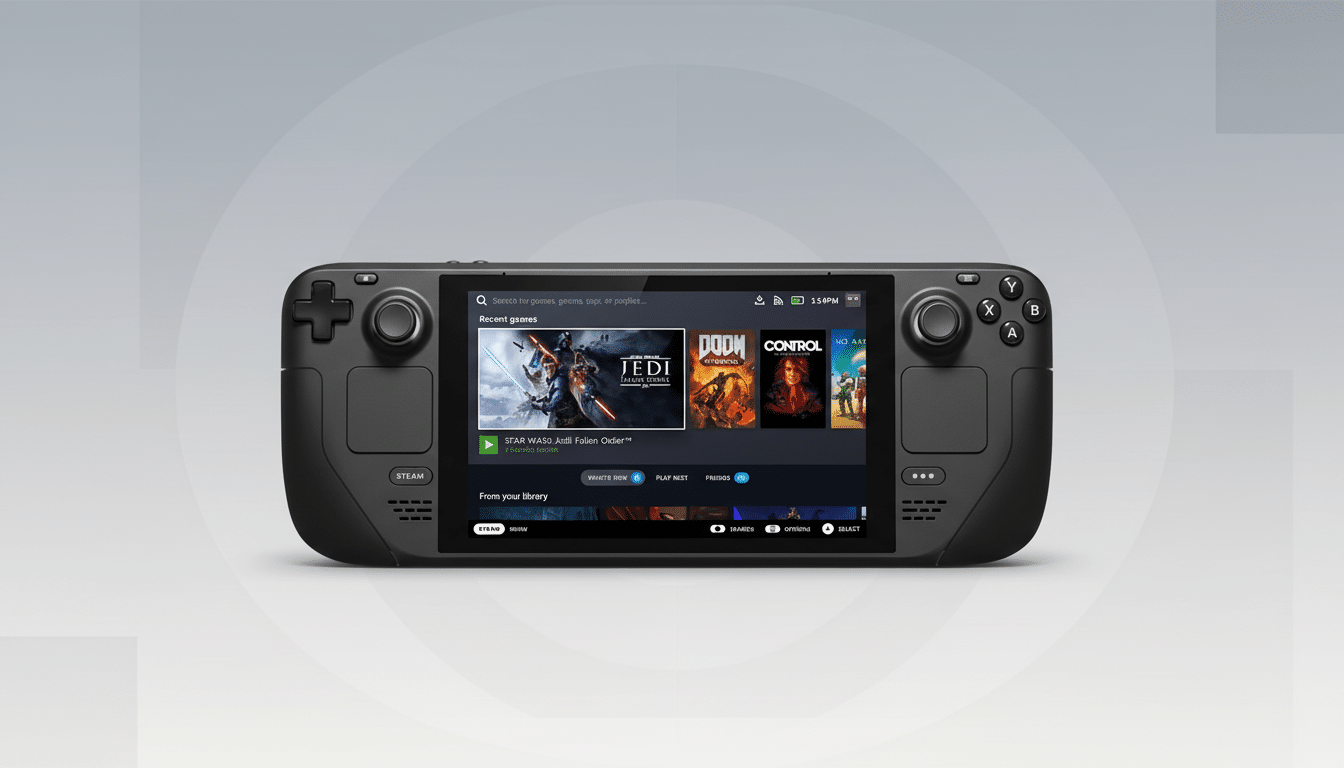Valve’s mulling over a quality-of-life change that Steam Deck owners have requested: automatic updates when the handheld is docked and not in use.
In a chat with The Verge, Valve hardware engineer Yazan Aldehayyat says that the team is “interested in supporting” the feature, indicating that active development for a more streamlined update process for its portable PC is underway behind the scenes.

For now, the Steam Deck reserves its system and client updates for when it’s awake.
In contrast, Valve’s recently announced living room PC — known as the Steam Machine — will be capable of running background updates when users aren’t using it and will even show how much progress an update has made on a built-in LED strip without having to have a TV or monitor turned on. Applying the same strategy to the Deck would smooth over one of a few remaining friction points on the device.
Why background updates on Steam Deck really matter
Timing for updates on a handheld counts. Does it surprise us that a few layers of OS patches, firmware revisions, Proton compatibility updates, and tweaks to game clients can add up? If you grab a new Deck a week later and have to spend the first 10 minutes updating the game, that’s time not playing. A docked, “set it and forget it” update model is much like how phones quietly refresh overnight and modern consoles take care of themselves in Rest Mode.
It’s also about reliability. Lots of PC games get regular updates and hotfixes. Valve’s biggest SteamOS/Steam Machine releases regularly update in the Stable channel as well as the Beta and Preview channels. The sooner they land on the newest build, the fewer support headaches developers facing edge cases will have to worry about. Console systems from Sony, Microsoft, and Nintendo have made this sort of background maintenance seem routine, and pushing the Deck closer to that standard could make it feel more like an appliance without having to give up its PC flexibility.
Technical obstacles and smart safeguards for updates
It’s harder to rely on background updates on a handheld that can’t remain plugged in like a console. As soon as you pull the Deck off its dock, two things might happen: power and connectivity issues. What’s harmless on a stationary box can wreak havoc on the go: broken downloads or, in the worst case, failed system updates.
There are well-known ways of mitigating that. SteamOS already relies on image-based, atomic update technology with rollback support — an infrastructure that makes for a more secure, interruption-tolerant installation. Valve could incorporate guardrails, such as waiting to execute crucial steps until the device is above some battery threshold, pausing if Wi‑Fi drops, and finishing the final apply-and-reboot stages only once the Deck is still and charging on a known network.

User controls would matter, too. Options to schedule update windows, restrict downloads to charging or docked state, and prioritize game patches versus OS updates would suit the way people use the Deck both in couch and desk situations, in addition to on the go. Visual indicators — even if there were no external LED strip — might be delivered by the on-device status LED, the dock’s status lights, or perhaps by a rapid wake-on-button ‘light up’ as progress is made before it sleeps back down.
Integrated hardware strategy across Valve devices
Valve’s larger hardware strategy suggests an integrated, living-room-friendly experience. In addition to the Steam Machine, the company also announced a new Steam Controller and a PC VR headset. Consistent update behavior across those devices would make ownership that much easier — whether you game on the couch or while traveling, the platform simply keeps itself current in the background.
For developers, that unity may tamp down on version fragmentation. SteamOS, Proton, and graphics driver updates are integrated sooner, with fewer compatibility surprises and improved performance throughout the catalog. Valve has its own data confirming the Deck’s impact on Linux gaming, and ongoing, routine maintenance would help maintain that momentum without requiring users to micromanage updates.
What we know and what’s next for Steam Deck updates
It should be said that Valve hasn’t officially confirmed automatic docked updates on the Steam Deck or when it would make them available. Interest from Aldehayyat is telling, however, particularly because the Steam Machine is being designed with low-level background computing in mind from bottom to top and should turn up in the next hardware cycle.
If Valve were to move forward, you would anticipate it appearing first in the SteamOS Beta or Preview channels, and it would also likely be tested initially in the Steam Client Beta, as that is where trials generally begin for new features from the company. Look for settings involving dock detection, charging behavior, and scheduled maintenance windows — the sorts of toggles that let power users dial up behavior while keeping the default experience blissfully hands-off.
The bottom line is this — Valve can turn the Deck into an even more console-like experience without losing sight of what makes it a PC. Automatic docked updates would be a tiny change with an outsized impact, cutting down on downtime and keeping players closer to the games they bought the Deck to play.

